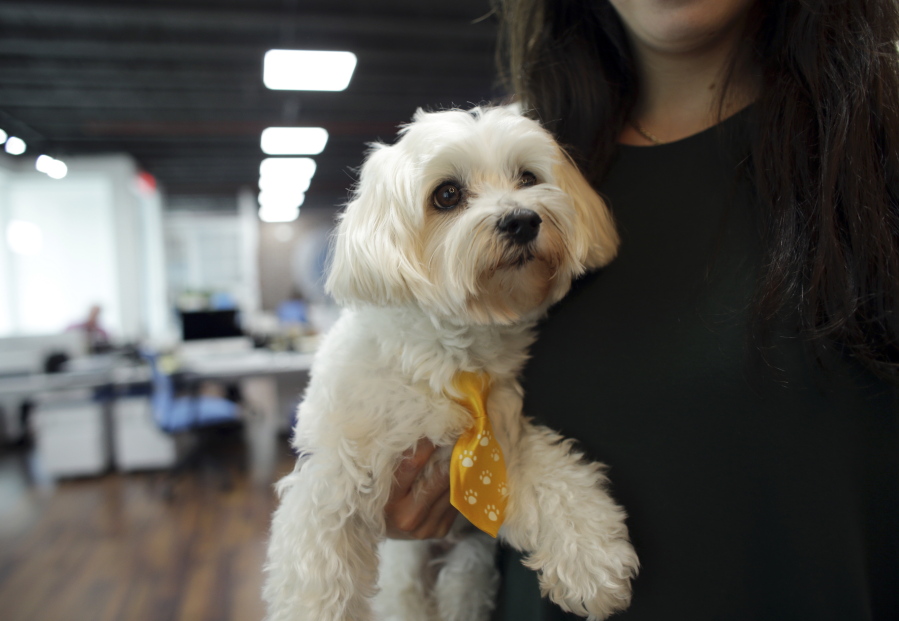NEW YORK — When a conference call turns tedious, Brent Robertson can still count on getting a smile from watching Gus rolling around on the floor.
The golden retriever is a regular visitor to Fathom, Robertson’s management consulting business in West Hartford, Conn. So are Pookie and Ari, dogs owned by two of Robertson’s co-workers.
Beyond the old tradition of a used bookstore or antique shop having a resident cat, some urban delicatessens and bodegas have cats to mitigate any rodent problems. And at some smaller professional businesses with a relaxed culture, it’s becoming more acceptable for employees to bring in their pets. Robertson is among business owners who think having animals around boosts morale, improves the work atmosphere and raises productivity.
“Everyone seems to smile and immediately become a little bit happier,” says Barbara Goldberg, CEO of O’Connell & Goldberg, a public relations company based in Hollywood, Fla. Her bulldog, Rosie, is a frequent visitor.



